Ralph Paine – 7 September, 2017
What establishes a certain body of art as being great is precisely its ability to endure; that despite historical-cultural shifts and ruptures it continues to be relevant, important, vital. Great art grows within its changing context, but great art also helps the context itself to grow, it aids social transformation, and this makes it seem impossible to either get around or over.
A people is a detour of nature to get to six or seven great individuals.
Yes, and then to get around them.
Friedrich Nietzsche
Life is theft.
Eduardo Viveiros de Castro
Colin McCahon was captivated by art’s futurity. He never stopped demanding of his forcefully singular works that they reveal in the here and now what he perceived to be the coming and promised forms of collective life. In a religious sense this is eschatology—the now all too familiar notion of McCahon-as-prophet. But it is also a kind of politics. By way of two key examples, my essay explores this political dimension of McCahon’s oeuvre, in order to establish, I hope, the dimension’s preeminence. Yet given the dynamic and intensely attractive regionality of the oeuvre, my exploration will be forced to take a detour through the mythological along the way.
McCahon is a great artist, a great individual—an Original. And yes, as Nietzsche alludes in my epigram, many have expressed the desire to get around him, or even over him, as in “Get over it!” But there is a paradox here—and a further complication—namely, that what establishes a certain body of art as being great is precisely its ability to endure; that despite historical-cultural shifts and ruptures it continues to be relevant, important, vital. Great art grows within its changing context, but great art also helps the context itself to grow, it aids social transformation, and this makes it seem impossible to either get around or over.
Doubtless, then, another quality of great art is its relevance beyond itself as art: yes, McCahon’s work resonates autonomously as art, but it is also said to resonate with us as a people. Perhaps this is because it makes visible a series of questions, about art, certainly, but also about what it might mean to be a people.
Now, one way of reposing these questions today—on McCahon’s behalf as it were—would be to ask: what is the relationship between a people and a place, a collective and a landscape? And do a people, through its very processes of formation and constitution, in fact create a unique concept of place? If before I linked McCahon’s politics to a concern for the future, the to-come, let’s note that this concern was linked directly to the geological, atmospheric and oceanic. In other words, McCahon was thinking with the earth. But he was also thinking by way of the political, and thus through the body of an earthbound people.
And yet are we a people, one people? Or are we multiple peoples? And do we dwell in one place and within one concept of place? Or rather, do we dwell in multiple places and thus within multiple concepts of place? If we are one people, our corresponding place is said to be the delimited territory of our nation state. The proper name New Zealand names this place, names it as a one, a bounded and bordered sovereign entity or unity, and thus its concept is derived from a very powerful transcendental measure: the One. But if on the other hand we are multiple peoples, then where and what are the corresponding multiple places and concepts? Are they to be found scattered in other nation-states, or do they exist here, within this nation state? However we may answer these questions—and they are difficult questions to answer—it is clear that the requirement to ask them does at least indicate that the political is in some way an expression, within a demarcated region, of an enduring set of relations (difference, identity, division, contradiction, tension, conflict, etc.) operating between the one and the multiple.
Let us return to the name New Zealand. This name names the one, the nation state. However, we also use another name, Aotearoa. But the name Aotearoa does not name the one. To the contrary, it names the multiple—the multiple and interwoven territories of the iwi and hapu of this island region. So the names New Zealand and Aotearoa are not synonymous; they do not name the same thing. If we refer to this group of islands here in the southern Pacific as New Zealand/Aotearoa, what we are in effect saying is that two political forms exist and interact here: the state form and the indigenous form. And this is what makes this place—these places—so politically interesting and important.
What, then, is the difference between indigenous peoples and states? Again, a difficult question, so let’s remain with our initial terms, the one and the multiple. It is said that an indigenous people resists the formation of the one and thus adheres to the multiple, that is, to the multiple lineages, sub-tribes, and so forth. An indigenous people is a transformational grouping of kinship networks shaped via shifting alliances formed within complex processes of gifting and counter-gifting. The key terms are prestige and obligation. There is a tendency within indigenous peoples to destroy or redistribute all surpluses in seasonal displays of generosity and consumption. If any one lineage becomes too powerful, too dominant or greedy, then an indigenous people has the ability to transform via new alliances, in other words, to use the alternating double movement of alliance to transform filial links. Put simply, the indigenous resist centralized power; resist the one in order to maintain the multiple. Hence an indigenous people are a “society against the state.”
This would mean, then, that a state is the formation and adherence of the one. A state is a political situation where one lineage or group (from the outside?) has taken power and maintained that power over time. In this respect a state is both radical and conservative: it operates via binding pacts; it creates the law and maintains the idea of property—the permanence of property—storing up surpluses of all kinds, maintaining exchangist techniques of distribution. A state constitutes itself by creating permanent institutions or “organs of power,” yet its ability to do so is always founded on an original act of violence, that is to say, on its radical and primordial imposition of the one.
Now, this is all too brief and somewhat problematic. Clearly a tribe is a one in some respects, although mainly in the sense of being named as such; and a nation-state is a one maintained by a multitude, although mainly via one dynasty, constitution or political party. Perhaps, then, the political concepts of the one and the multiple are best understood as exactly that, concepts or virtual poles of attraction that any actually existing political formation will gravitate towards in some ways more than others. Perhaps we may only speak of mixtures and tendencies. Yet whatever the case, it is certain that a state is a political form that has crossed a certain threshold towards the one. An important consequence of thinking in this manner is that it removes any overriding evolutionist or teleological concepts relating to political formations, and thus we may assert that the state form and the indigenous form have always already been there as potentials, and therefore, that the state, or even the nation state, is not a better evolved or superior political form.
In his Islands of History the anthropologist Marshall Sahlins describes the indigenous life-way as a “mytho-praxis.” What this means is that with an indigenous people the everyday practical lives of its members are understood to be repetitions of myth. Thus, events which have occurred to the gods and the ancestors of the collective are said to be continually reoccurring in the present world; there is a dynamic link between cosmic myth and material life in the here and now. Sahlins names these links “eternal returns of the same.”
Let’s return to Aotearoa. If pre-European iwi and hapu resisted the one, that is to say, resisted the formation of centralized power in their everyday lives, then, following Sahlins, we would expect at least some of their interconnected cosmologies and myths to convey such a resistance. Let me relay the beginning of one such example:
Before time there existed an all encompassing, static oneness. This primordial oneness subsisted as the eternally selfish—perhaps even evil—sex act of a two. Yet this was only a potential two. In order for life to occur, this primal oneness, which remained only a potential two, would have to be divided and separated out into an actual two. Also subsisting within the oneness was a potential multiplicity, personified there as the unborn children of the one: Tāwhiri, Tāne, Tangaroa, Tū, Rongo, and Haumia. It was Tāne who, putting his head down and feet up and pushing, divided the one into two and thus separated Rangi, the sky father, from Papa, the earth mother. It was Tane who through the event of his own birth caused the birth of a dually divided world. The child thus gave birth to the parents. By forcing the division of the one into two Tāne created the “world of light”, the space-time in which the procreative life of the brothers could now develop and exponentially increase—in which the multiple might come into being as becoming. However, Tāwhiri, because he had disagreed with the separation, clings to a now estranged Rangi and together they conceive a multitude of their own—wind, rain, tornadoes, storms, cyclones—a brood of entities with which to attack and punish the mother-bound brothers…
Tāne is the tree, sky-pole, cosmic prop, house post of the world—the pou which holds apart the one… We have reached a juncture where it seems important to remind ourselves of how McCahon’s paintings are full of depictions of pou: load bearing props, tau crosses, pillars, shafts of light, trees. In one work from the 70s McCahon’s grandson Tui Carr “celebrates” Muriwai, but in doing so he also holds up the sky and thereby reveals in this act the chromatic brilliance of the scene itself: Tui Carr is Tāne. But let’s remind ourselves also of how important further division and sub-sectioning is for McCahon, of how his paintings play endlessly with the distribution and allotment of space and number, black and white, and with the many paradoxes and regresses involved.
But I’m getting ahead of myself. Let’s return to the myth and note that the narrative operates on the cosmic level, that is to say, within the sacred realm of the gods, the circle of absolute cosmology. Now let’s leap from there to the next circle, to the realm of the ancestors. As we should expect, here we find that the very same concepts which appeared in the myth are repeated by the ancestors in Hawai’iki. Like the realm of the gods, Hawai’iki is a mythical and sacred place, but at the same time it is also real: as the historian James Belich puts it, “Maori had to come from somewhere.” No doubt there are many theories about from exactly where, and many contested versions of the migration story: great fleet versions, small fleet versions, single landing versions, and so on - including the differing oral versions of the multiple hapu and iwi. So Hawai’iki is a kind of half-way house, an intermediary zone located somewhere between absolute cosmology and written history.
Let’s continue… Once upon a time somewhere in the eastern Pacific, on an island in what the Europeans named Polynesia, a chief and his lineage are becoming far too powerful and dominant. A greedy oneness is forming and there is much discontent and argument amongst the tribe. Suddenly from within this situation a new chief stands up, seeking followers and plotting a course out from the growing oppression and overt ranking. Past relations of filiation are broken asunder and a new separation occurs, again, a separation which Tāne makes possible—yet not this time as a living tree, but rather as a waka or canoe. On this level, the vertical element of the tribe’s mytho-praxis transforms to become a horizontal one, and the new chief himself shape-shifts into a kind of voyaging prophet or shaman, setting forth across the ocean towards a new land, forming fresh alliances with Rangi and Tāwhiri. Here, then, Tāne becomes both the means of and a symbol for the coming expression of the group’s collective desires.
And when the first members of this new tribe arrive here on the shores of Aotearoa they immediately set about erecting a tuahu, a sacred site/structure built in part from the cut off and upturned prow of the voyaging waka, and thus Tāne assumed his vertical position here on the new whenua, once again allowing for the regeneration of indigenous life to occur, giving space for the multiplication of the many between Papa and Rangi. Of course this site/structure might yet represent a potential oneness, and so right up to today the possession and significance of such sites is contested via the oral traditions of the various iwi and hapu concerned.
Fast-forward to Pakeha-Maori history, the third level of our story. In the years immediately following the signing of the Treaty of Waitangi, Ngapuhi of Northland suffered a rapid economic decline. The bulk of their once flourishing trade with Pakeha had moved south to Auckland, now the nation’s capital. Realising that his iwi had somehow been tricked, the Ngapuhi warrior chief Hone Heke rebelled. A new and all powerful oneness had erupted on the scene. He thought that he’d entered a chiefly alliance with the British but now he decided that they had double-crossed him with their foreign promises and written pact. Heke’s symbolic genius was to attack the British flagpole at Kororareka. For him and his followers the flagpole had become a frightening new thing. More than simply a vehicle for British chiefly status, it seemed now an unwelcome tuahu, a threatening symbol of strictly British regeneration and wealth. Heke’s act was like a piece of radical performance art: he wasn’t that interested in the destruction of lives or property, but he did want the pou haki cut down, and he achieved this four times. So we witness here a fresh return of the same of the original myth—another resistance to the one.
Let’s jump levels one last time, to the present or very recent past. In 1975 McCahon was commissioned to paint a large mural for the new visitor’s centre of the Department of Lands and Surveys (now Department of Conservation) at Lake Waikaremoana in the Urewera National Park. This breathtakingly beautiful region of lakes and steep rain forested hills is the homeland of Tūhoe—their turangawaewae. But in 1896 the Crown had declared the region a “native reserve”, thus marking the last phase of a once very real independence of the iwi from the state. The struggle to regain this independence has continued ever since. McCahon’s mural is dominated by a depiction of Tāne: there is a giant pou separating the sky from the green earth, and this seems to allow for a proliferation of geological forms and written text to emerge within the space thus created. But here Tāne is also a tau cross of the kind that ancient Middle Eastern prophets once carried. As already noted, McCahon is often spoken of as a kind of prophet. Yet we cannot be certain that he regarded himself in such a manner. We can be certain, however, that he was inspired by the 19th century Maori prophets, all of whom blended biblical themes, mythology and radical politics to create hybrid movements of resistance to state power. Rua Kenana at Maungapohatu and Te Whiti at Parihaka are the best known examples.
After a series of consultations with Tūhoe kaumātua—these resulting in various textual and painterly adjustments—McCahon completed the mural and it was hung in the visitors’ centre, remaining there for two decades. However, in 1997 the mural was stolen, and remained missing for 15 months. During this time anonymous members of Tūhoe let it be known via the media that the mural had been removed as a gesture of protest against Department of Conservation management procedures in the park. So it is clear that Hone Heke’s actions of 1844-45 returned and repeated themselves at Waikaremoana in 1997: by stealing McCahon’s mural—by cutting down his pou as it were—the protesters renounced symbolically DOC’s authority over the park, and hence instantly challenged state sovereignty. This all turned out to be a major event in the artistic and political life of the nation: the theft caused much debate, conflict, and a general gnashing of teeth. However, after long and complex negotiations between the various parties involved—mediated by wealthy art patron Jenny Gibbs—the mural was eventually returned, virtually unharmed. It had been laying peacefully somewhere, rolled up in a horizontal position like a waka on some dream voyage to a new island. And what is really interesting about these events is that the return seemed at the time like a fortuitously displaced act of generosity, as if the initial theft had now transformed itself into an act of gifting.
⟡⟡⟡⟡⟡⟡⟡⟡⟡
During the 1980’s McCahon began gifting some of the more important works still in his possession to specific institutions and individuals. It was as if he knew he was nearing death and so wanted to establish permanent homes for these paintings. In 1982 he gifted the work Storm Warning to Victoria University, the state university of the nation’s capital. The text on this work is a particularly moralistic one, from Paul’s letter to Timothy in the New Testament:
YOU MUST FACE THE FACT: The final age of this world is to be a time of troubles. Men will love nothing but money and self. They will be arrogant, boastful and abusive, with no respect for parents, no gratitude, no piety, no natural affections. They will be implacable in their hatreds.
Why this message to grace the halls of Victoria University? Why, when it could so easily be read as an example of his pedagogy at its worst (his worst “teaching aid” as it were), did McCahon decide to dedicate this rather pious and singular message to Victoria’s future students? His thinking of that time is uncertain - we may only speculate. And yet today these words from the Bible have taken on a strangely powerful resonance. Did McCahon foresee what was going to happen at the university? Did he foresee the changing character of the State and the coming neo-liberal revolution of the1980s and 90s?
The history of that time is still being written, but in very broad terms I would describe it as the time of a deepening and intensification of relations between the state and capitalism. In 1998 Victoria University sold Storm Warning for $1.2 million, and this event, just like the Urewera incident before it, caused widespread reaction and debate. So why was Storm Warning sold? Why did Victoria University de-acquisition such an important, dedicated gift?
Part of the answer lies in the fact that the University now could, and so it did: a new corporate paradigm was emerging in the tertiary education sector and so the selling-off of assets was becoming par for the course. But another part of the answer is to be found at Te Papa, Our Place. Te Papa was conceived and constructed during exactly this intense period of neo-liberal state restructuring. And it was conceived via the combination a two into a one: the National Museum and the National Art Gallery were joined to form a single institution, with a whole new neo-liberal cultural brief. Subsequent to Te Papa’s opening, Jenny Harper, the former director of the National Art Gallery, resigned from her position at the new museum. It is said this was because she did not believe the visual arts—and the National Art Collection in particular—were being given enough space and the proper mana within the new institution. In any case, after leaving Te Papa Harper became Head of Art History at Victoria University and started planning a new contemporary gallery for the university, one that she envisioned would fulfill many of the functions that, to her mind, Te Papa was ignoring. Victoria University sold Storm Warning in order to raise capital for the construction of the new gallery, which of course is now built and operating under the name The Adam Art Gallery. As a counter-honouring of McCahon’s gift, perhaps it should have been named The Storm Warning Gallery!
So what are the political issues here? Earlier we noted a gifting/counter-gifting function operating within the formation of indigenous peoples; and of how alliances are made and unmade by extravagant displays of generosity and redistribution. Within any such economy of the gift there is always reciprocity, that is to say, when giving or donating something there remains an obligation for the person or group who receives the gift to return it in a new and often increased form. In other words, an act of giving “forces the recipient to act.”
We ask, then, is there ever a situation in which all trace of a gift is destroyed within the very act of it being given? Is there ever a pure gift of no return? Or are we locked in an everlasting either/or here? To give-without-taking would simply equate to a taking-without-giving—they travel the same infinite and vicious circle, the same eternal return of gifts and theft, debt and guilt. Perhaps to always both give and to take, take and to give is best then. But now the question becomes: in what proportions? Un-greedily? What is the measure here? How best to determine abstract value? When McCahon gifted Storm Warning to Victoria University this act was an attempt at removing the painting from the everyday circuits of money and exchange. He wanted to find a place outside and above these circuits, a place from which he might (via the medium of his painting) judge and condemn them. But with the sale of Storm Warning suddenly this place disappeared. Yet did it in fact ever exist? Or was McCahon’s gift always already steeped in its own impossibility?
Without searching for any essence of either art or politics, McCahon nevertheless provides us with a remarkably productive set of questions about what art might be capable of, and by extension, what we might be capable of as both earthbound persons and peoples to-come. In this sense there is a makeshift-ness to McCahon’s art. Certainly in his choice and use of materials—the orchard signs and portable blackboards, the un-stretched canvases with brass eyelets like tents as temporary shelter, and so forth. But also in the way his focus was always moving. McCahon never stopped changing places, changing the direction in which he faced and moved, the colouring and styles he was interested in, or the historic and social concerns he wanted to travel with. Even within an individual work there are often multiple lines of flight, languages, perspectives, horizons, time zones and vanishing points.
And so too McCahon’s art transforms the viewers. By means of proliferating series and bifurcations it relays us along trajectories of becoming. It speaks in tongues. It dislocates the given world via pans and zooms, ruptures, stutterings, swerves, jump-cuts and falls, forcing openings which we constantly betray, crossings-over that exhaust the powers of our elucidation and analysis. McCahon’s art is a sublime art of the future, and thus there is no getting around or over him. Why would we even want to? Walking alongside McCahon the world seems composed of nothing but relations-in-transit, a changing dynamic passing between gifts and theft, history and myth, geography and politics, tribes and states, clouds, rocks, paint, brush and canvas.
Perhaps this is why he was so attracted to the indigenous “world of light”, with its fecund possibilities for fresh alliances, resistance and demonic renewal. But equally, he was attracted to the possibilities of the one, to the common possession of “one world”—a world which might just shape-shift itself into a socially just democracy, a “necessary protection” for all. Yet McCahon was no nationalist: a patriot perhaps, but only in the sense that he wanted to help place the coming communities—the “small birds”—out of all danger. Yet best of all, I like to think of him as a nomadic regionalist, always traveling towards some place or some thing of which he could say: “Look, this is new!”
Ralph Paine
BIBLIOGRAPHY
Benedict Anderson, Imagined Communities, Verso, London & New York, 2006.
Angela Ballara, Iwi: The Dynamics of Maori Tribal Organisation from c.1769 to c.1945, Victoria University Press, Wellington, 1998.
Manuhuia Barcham, “(De)Constructing the Politics of Indigeneity,” in Duncan Ivison, Paul Patton and Will Sanders, eds., Political Theory and the Rights of Indigenous Peoples, Cambridge University Press, Cambridge and New York, 2000.
James Belich, Making Peoples: A History of the New Zealanders, Penguin Books, Auckland, 1996.
Judith Binney, Redemption Songs: A Life of Te Kooti Arikirangi Te Turuki, Auckland University Press and Bridget Williams Books, Auckland, 1995.
Marja Bloem and Martin Browne, eds., Colin McCahon: A Question of Faith, Craig Potton Publishers and the Stedelijk Museum, Nelson and Amsterdam, 2002.
Gordon H. Brown, Colin McCahon: Artist, Reed Publishing, Auckland, 1992.
Pierre Clastres, Society Against the State: Essays in Political Anthropology, trans. Robert Hurley, Zone Books, New York, 1987.
Gilles Deleuze and Felix Guattari, A Thousand Plateaus: Capitalism and Schizophrenia, trans. Brian Massumi, University of Minnesota Press, Minneapolis, 1987.
Jacques Derrida, Given Time: 1. Counterfeit Money, trans. Peggy Kamuf, The University of Chicago Press, Chicago and London, 1992.
Michael Gifkins, ed., Colin McCahon: Gates and Journeys, Auckland City Art Gallery, Auckland, 1988.
Sir George Grey, Polynesian Mythology, Whitcombe and Tombs, Auckland, 1956.
Marcell Mauss, The Gift: Forms and Functions of Exchange in Archaic Societies, Cohen and West, London, 1966.
Friedrich Nietzsche, Beyond Good and Evil: Prelude to a Philosophy of the Future, trans. R. J. Hollingdale, Penguin Books, Harmondsworth, 1990.
Friedrich Nietzsche, The Will To Power, trans. R. J. Hollingdale and W. Kaufmann, Vintage Books, New York, 1968.
Jonathon Parry and Maurice Bloch, eds., Money and the Morality of Exchange, Cambridge University Press, Cambridge and New York, 1989.
Marshall Sahlins, “Other Times, Other Customs: The Anthropology of History,” in Islands of History, University of Chicago Press, Chicago & London, 1985.
Andrew Sharpe, “History and Sovereignty: A Case of Judicial History in New Zealand/Aotearoa,” in Michael Peters, ed., Cultural Politics and the University in Aotearoa/New Zealand, Dunmore Press, Palmerston North, 1997.
Various, Catalogue, John Leech Gallery & Gow Langsford Gallery, Auckland, 1999.
Various, McCahon: A View from Urewera, City Gallery, Wellington, 1999.
Various, The McCahon Room 03: Urewera Mural, Auckland Art Gallery Toi O Tamaki, Auckland, 2001.
Eduardo Viveiros de Castro, Cannibal Metaphysics, trans. Peter Skafish, Univocal Publishing, Minneapolis, 2014.
Stephen Zepke, Colin McCahon and the Writing of Difference, M.A. Thesis, Auckland University, 1992.
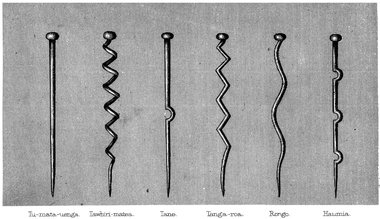
 Two Rooms presents a program of residencies and projects
Two Rooms presents a program of residencies and projects Advertising in this column
Advertising in this column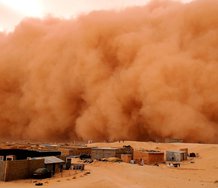
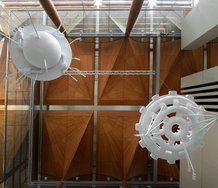
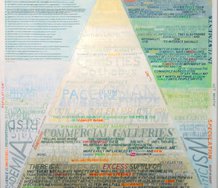
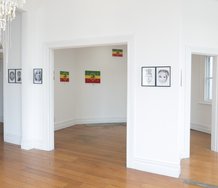
This Discussion has 0 comments.
Comment
Participate
Register to Participate.
Sign in
Sign in to an existing account.